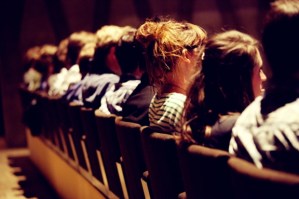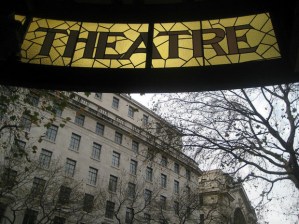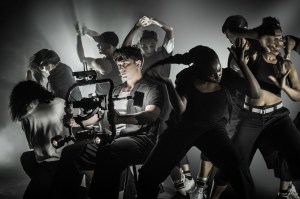Theatre etiquette: the world view
Lecturer Dr Penelope Woods is accompanying Shakespeare’s Globe’s Hamlet as it tours the world, along the way she’s noticed how differently audiences in different countries respond to the same play
Shakespeare’s Globe launched a tour of Hamlet in April 2014 which will travel to every country in the world by April 2016. Along the way I have carried out audience research in wide ranging locations from New Zealand to Nauru, Japan to Jordan, and have witnessed very different responses to the same production.
Laughter, for example, is a culturally tricky response and hard to interpret. Audiences in Wellington and Auckland laughed frequently in all the "right" places – at the Rosencrantz and Guildenstern mix-up, at the Gravedigger’s spiel. But among the Papua New Guineans in Port Moresby, the audiences laughed particularly at the on-stage deaths. In terms of UK response, Polonius’ death might produce a shocked titter, but the laughter at Ophelia’s burial and at Laertes’ violent death felt more unusual. Company members have mentioned that laughter patterns amongst Caribbean audiences were similarly unexpected and often responded to death scenes. The PNG audience were highly engaged with the production and, outraged by Gertrude’s duplicity and Claudius’ scheming, were eager to discuss it afterwards. Their laughter was an exuberant delight, I think, at the theatricality of pretending to be dead on stage which in no way diminished a seriousness – or profundity – also experienced at those moments.
Some audiences sit still in their designated seats, in a way that UK audiences would recognise as conventional; others, however, move around the auditorium during the performance, stand up, stretch and discuss the play with friends. At the performance in Nauru, a game of basketball broke out part way through. It was a different kind of social event where all ages were present. The constant hum and buzz meant that the points of interest, such as the final fight scene, were electric with the sudden intense and gathered focus.
The fight scene at the end of the play also provoked unusual behaviour amongst the audience at the Za’atari Refugee Camp in Jordan, with mostly Syrian spectators. The display of raw violence shot through the audience like electricity and within a few minutes half of the audience were on their feet, many of them filming what they saw. In the same scene, when the despotic King Claudius got his comeuppance, there was a sudden burst of applause. The death of Claudius has been met with spontaneous applause in some other countries, including Uzbekistan and Kazakhstan.
The conventions governing applause, ovations and curtain calls varies from country to country. The audiences in Istanbul gave a scattered ovation on the final night but just one curtain call. The audiences in the outdoor venue in Seoul, on the other hand, sat still and silent, even though it poured with rain throughout. Yet when the show finished, the company got four enthusiastic curtain calls. These behaviours don’t stand as national stereotypes, but the sheer variety of audience etiquette encountered by the company means that no two performances are ever the same.
Dr Penelope Woods is a Lecturer in Drama, Theatre and Perfromance at Queen Mary’s, University of London. She is touring with the Globe to Globe's Hamlet.

















